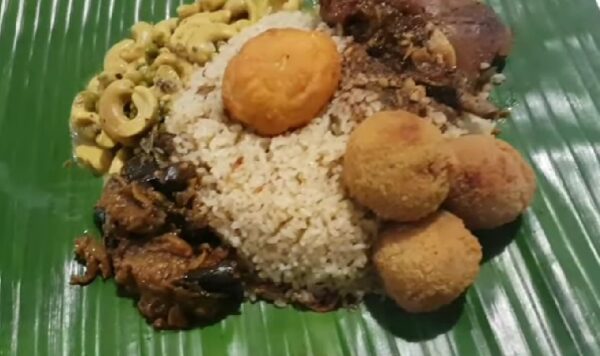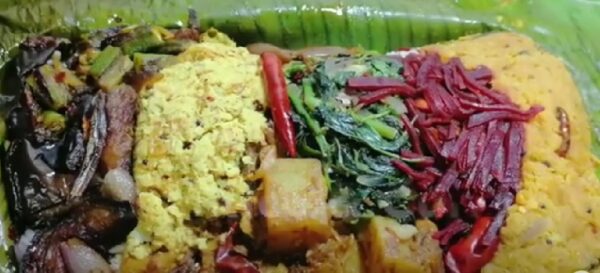The Art of Serving Sri Lankan Food on Banana Leaves-By Kalani –eLanka

Sri Lanka, a tropical paradise nestled in the Indian Ocean, is not only renowned for its stunning landscapes and cultural heritage but also for its rich culinary traditions. One of the most fascinating aspects of Sri Lankan cuisine is the practice of serving food on banana leaves. This centuries-old tradition goes beyond mere presentation; it encompasses cultural significance, environmental sustainability, and a unique sensory experience. In this article, we will delve into the origins, benefits, and the art of serving Sri Lankan food on banana leaves.
The tradition of serving food on banana leaves is deeply rooted in Sri Lanka’s cultural history. It can be traced back to ancient times when resources were limited and people sought creative solutions for serving and consuming meals. Banana leaves were abundant and readily available, making them a practical and sustainable choice for serving food. Over time, this practice evolved from a necessity to a cherished tradition that has become an integral part of Sri Lankan cuisine.
Serving food on banana leaves holds immense cultural significance in Sri Lanka. It is often associated with hospitality, warmth, and generosity. In traditional Sri Lankan households, serving a meal on a banana leaf is considered an expression of respect and care for the guests. The act of sharing a meal on a banana leaf fosters a sense of unity and togetherness, reinforcing the bonds between family members and friends.
Beyond its cultural importance, serving food on banana leaves aligns with modern sustainability efforts. Banana leaves are biodegradable, making them an eco-friendly alternative to disposable plates and utensils. This practice minimizes the use of single-use plastics and reduces the environmental impact of food consumption. As the world grapples with environmental challenges, the tradition of serving food on banana leaves serves as a shining example of how ancient practices can be harmonized with contemporary concerns.

The use of banana leaves as serving vessels not only appeals to the palate but also engages the senses in a unique way. The leaves impart a subtle, earthy aroma to the food, enhancing the overall dining experience. The vibrant green color of the leaves adds an aesthetic appeal to the presentation, creating a visually pleasing tableau. Additionally, the smooth texture of the leaves against the fingertips adds a tactile dimension to the act of eating.
Serving food on banana leaves is not merely a utilitarian act; it is an art form in itself. The arrangement of different dishes on the leaf requires skill and precision. Each type of food has its designated spot on the leaf, and the layout is often symmetrical and visually appealing. The balance of flavors, colors, and textures is carefully considered, resulting in a harmonious meal that tantalizes both the taste buds and the eyes.
The tradition of serving Sri Lankan food on banana leaves is a testament to the enduring connection between culture, sustainability, and culinary artistry. Beyond its utilitarian purpose, this practice encapsulates the heart and soul of Sri Lankan hospitality and tradition. As the world embraces the importance of preserving both cultural heritage and the environment, the tradition of serving food on banana leaves stands as a shining example of how age-old customs can contribute to a more sustainable and meaningful way of life.







